ВЛАДИМИР АРХИПОВ
«ИМЯ ФОРМЫ»
Саморазвивающийся музей на улицах города
«Имя формы» — проект открытого народного музея самодельной вещи, который продолжает двадцатилетнюю художественную практику Владимира Архипова, посвященную исследованию процесса самостоятельного изготовления недостающих бытовых предметов.
Художник надеется создать музей для сохранения изобретаемой москвичами материальной культуры и передачи накопленного опыта решения повседневных проблем. Экспозиция должна быть размещена в разноформатных модульных витринах, установленных на улицах города рядом с теми местами, где были обнаружены экспонаты (сейчас в коллекции более 250 предметов, найденных в Москве).
Размещение объектов в городской среде — это основа концепции саморазвивающейся открытой институции, которая находится в постоянном взаимодействии с горожанами. Каждый житель города сможет внести свой вклад в экспозицию музея. Связь экспоната с его автором будет зафиксирована в рассказе об истории создания вещи. Все рассказы разместят на специально разработанном для проекта сайте, где будет и карта с указанием расположения музейных витрин. После завершения выставки и создания каталога все предметы возвратят хозяевам: таким образом, самодельным вещам лишь временно присвоят статус произведений искусства.
Согласно концепции художника, экспонатом музея может стать любой самодельный объект, удовлетворяющий следующим критериям:
а) у вещи должен быть автор (его имя устанавливается в процессе поиска)
б) не должно быть копий
в) автор готов предоставить вещь для экспонирования
г) автор или очевидец создания вещи даёт интервью д) вещь должна быть функциональной
е) вещь создавалась не для продажи.
Структура музея предполагает создание постоянного
Феномен собственноручного изготовления бытовой вещи, «вынужденного творчества», «вещевого фольклора» до сих пор не отрефлектирован гуманитарным сообществом. На сегодняшний день ни один из существующих музеев не владеет такой концепцией архивирования материальной культуры, которая позволяет находить и показывать самодельные вещи. Данное обстоятельство и собственный возраст художника заставили Архипова задуматься об ответственности за атрибутирование этой удивительной части современной культуры и о необходимости перехода от индивидуальной практики к открытому проекту общественного музея. Небольшой, но устойчивый, распределённый в городе проект, по идее художника, может стать моделью и ядром развития большой
VLADIMIR ARKHIPOV
THE NAME OF THE FORM
A self-developing museum on the streets of the city
The Name Of The Form is a project of a peculiar folk museum of handmade, impromptu objects, created by ordinary people to solve practical problems when a normal tool is not available. This project continues the investigation of the topic which Vladimir Arkhipov has been exploring for over twenty years.
The artist hopes to create a museum to preserve homemade material culture invented by Muscovites and share the beneficial experience of solving domestic problems. The exhibits will be placed in module cases of different forms and installed on city streets next to the places where the objects were initially found (today the collection comprises more than 250 exhibits, all found in Moscow).
Incorporating objects in a city environment is the basis for the concept of a self-evolving open institution existing in constant cooperation with city dwellers. Every city resident can make a contribution to the museum by sending their handmade objects, thus allowing them to become temporary objects d’art. The link of the exhibit and its creator will be established in the story of its creation. All these stories will be published on a specially created website together with the map showing the exact places where the module cases are installed. After the exhibition is over and the catalogue is finished, all the objects will be returned to their owners. In such a way the once improvised tools become high art and then revert back to their original status as objects made by people using their native ingenuity.
According to the artist’s concept, any makeshift object satisfying the following criteria can be accepted among the museum’s exhibits:
a) an object must have an author (their name to be established via a search process)
b) it must not be a copy
c) the author is willing to hand over the object for exhibition
d) the author or a witness of its creation is available for interview
e) the object must be functional
f) the object was not made for sale.
The museum structure presupposes the creation of a permanent center of operations and logistics as well as inviting well-known artists, scientists and other specialists in material culture as curators.
The phenomenon of handmade production of domestic objects, “the creativity of necessity” or “material folklore”, has hitherto not been reflected by the liberal arts community. At the present time, there is no museum in existence that entertains such a concept as the archiving of material culture, as might enable it to seek out and display handmade objects. This circumstance, coupled with the artist’s own age, compelled Arkhipov to consider the responsibility presented by the attribution of this astonishing part of contemporary culture, as well as the necessity to move from individual practice in this regard to the open project of a public museum. A small but self-sustaining project, spread about the town, might, according to the artist’s vision, become the model and core for the development of a major social and museum form.
ВАРИАНТЫ ЭКСПОНИРОВАНИЯ / WAYS OF EXPOSURE
ВЛАДИМИР АРХИПОВ
Этот междисциплинарный проект видится мне как одна из возможных стратегий архивирования материальной культуры. На примере самодельных утилитарных вещей музей будет осуществлять постоянный мониторинг, способствовать социальной гармонизации и
Мы говорим о самодельных вещах и связываем их с понятием «музей». Это не случайно: изготавливая для себя необходимый предмет, человек создает, с одной стороны, уникальный функциональный объект, с другой — практическая вещь делается не для продажи. Это сочетание приближает подобные объекты к той части материальной культуры, которую мы называем «художественные ценности». Каждый человек уникален. Как предъявить его уникальность и расширить диапазон его ролей от семейных и бытовых, до образовательных, культурных,
Наш герой (и экспонент, обладающий «свойствами экспоната») — любой и каждый, кто сделал своими руками утилитарную вещь. «Вход в мир культуры» для зрителя будет бесплатным, так как экспозиция из этих предметов будет распределена в городском пространстве. Расширяясь, она сформирует особый слой презентации и восприятия, в котором территория и районы, их население и реалии современного искусства будут взаимодействовать и дополнять друг друга.
VLADIMIR ARKHIPOV
I regard this interdisciplinary project as one of the possible strategies for the archiving of material culture. Using homemade utilitarian objects, the museum will engage in a constant monitoring process, fostering social harmonisation and artistic and anthropological reflection. The museum will be a place for meetings between people, between art and folk creativity, and a place for the transformation of the viewer into a project participant. The project will give anyone who has created a domestic utensil with their own hands, something that would usually go unseen, the opportunity to display it to the widest possible audience.
We are talking about handmade things and connecting them up with the concept of the “museum”. This is no matter of chance: in making for himself a needed item, man creates, on the one hand, a unique functional object, and on the other, there is a practical item that has been made not for the purpose of selling it. This combination brings such objects closer to that part of material culture which we refer to as “artistic values”. Each person is unique. How can we reveal his uniqueness and widen the range of his role beyond the familial and domestic, to the spheres of education, culture and the public arts? A reflexive field needs to be created, or a “conceptual mirror”. In it, those who have realised – intuitively and organically, without even recognising it themselves – their creative capabilities, in the solution of personal routine problems, will find their reflection, their image. Many of these might be offered the chance to see themselves in a public space of a new type – an open folk museum of handmade things.
Our hero (and exhibit, possessed of the “properties of an exhibit”) is anyone and everyone who has made a utilitarian object with their own two hands. “Entrance into the world of culture” will be free to viewers, as the displays of these objects will be spread around the urban space. In expanding, it will form a special layer of presentation and perception in which districts and neighbourhoods, their heritage and the realia of contemporary art, will interact and complement one another.

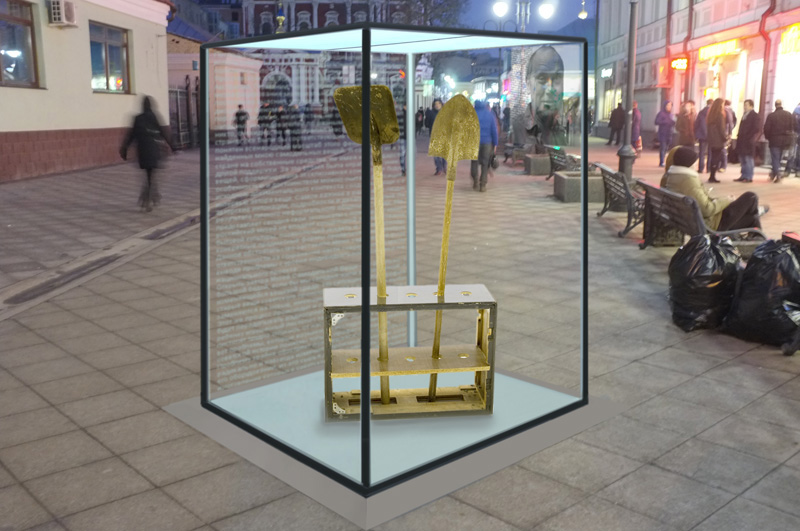
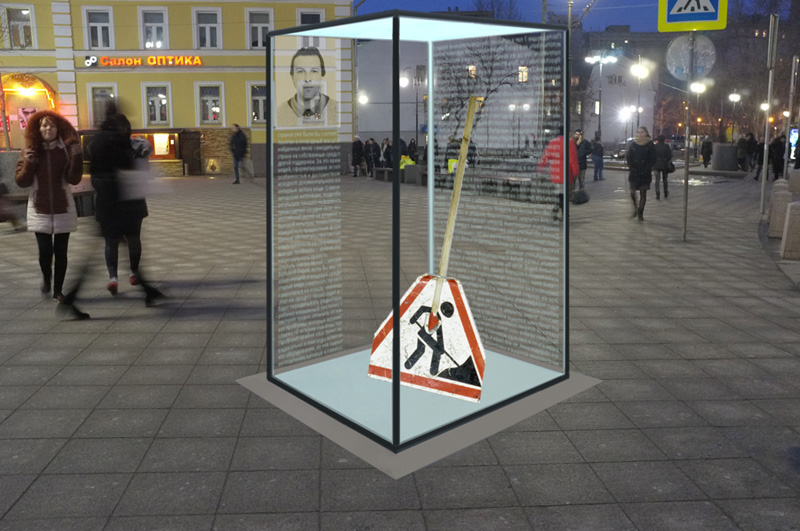


ДРУГИЕ ВАРИАНТЫ ЭКСПОНИРОВАНИЯ /
OTHER EXPOSITION OPTIONS
НАТАЛЬЯ ОРЕХОВА
ПОДГЛЯДЫВАНИЕ
Одним из основных способов взаимодействия с городом для автора предложенной концепции является поиск сокровищ (hidden treasures), которыми богата на самом деле Москва и ее жители. Прогулки по тихим улицам в поисках странных и неизвестных объектов, заглядывание за заборы московских дворов чреваты неожиданным открытием
NATALYA OREKHOVA
PEEPING THROUGH WINDOWS
One of the chief methods of interaction with the city for the author of the proposed concept is the search for hidden treasures, something in which Moscow and its inhabitants are actually quite rich. Walks along quiet streets in search of strange and unknown objects, or peeping through the fences of Moscow courtyards, are activities pregnant with the unexpected discovery of some kind of preserved other world. To this range of methods for the investigation of the city might be associated that of studying private spaces such as those entrance halls and apartments into which we can peer through an open door or window. The objects of Vladimir Arkhipov are the same kind of “hidden treasures”, but in material form (the world of design or daily life). The exposition concept consists of the use of the existing city infrastructure as display modules – things like windows, open structures, blank facade walls or the fenced off territories of private homes, inside which the objects can be set up in some manner, or else placed in some kind of protective covering (glass cases or individual boxes mounted on the facades of buildings and blank gable ends). Within this scheme, the position of each object must be clearly justified – it must correspond with the functional purpose of the object and its dimensions. Thus, small objects might be placed in display cases, but larger scale items would need to be housed in glass boxes on the facades or territories of private properties.

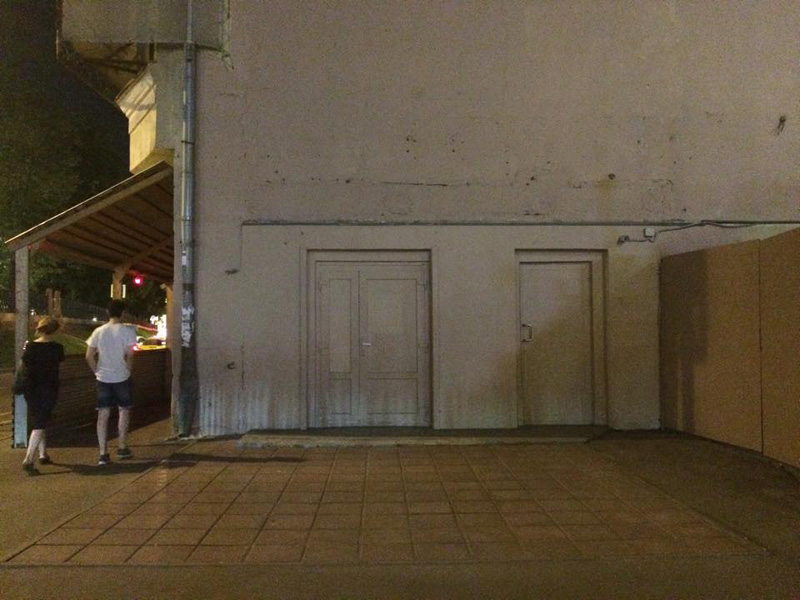

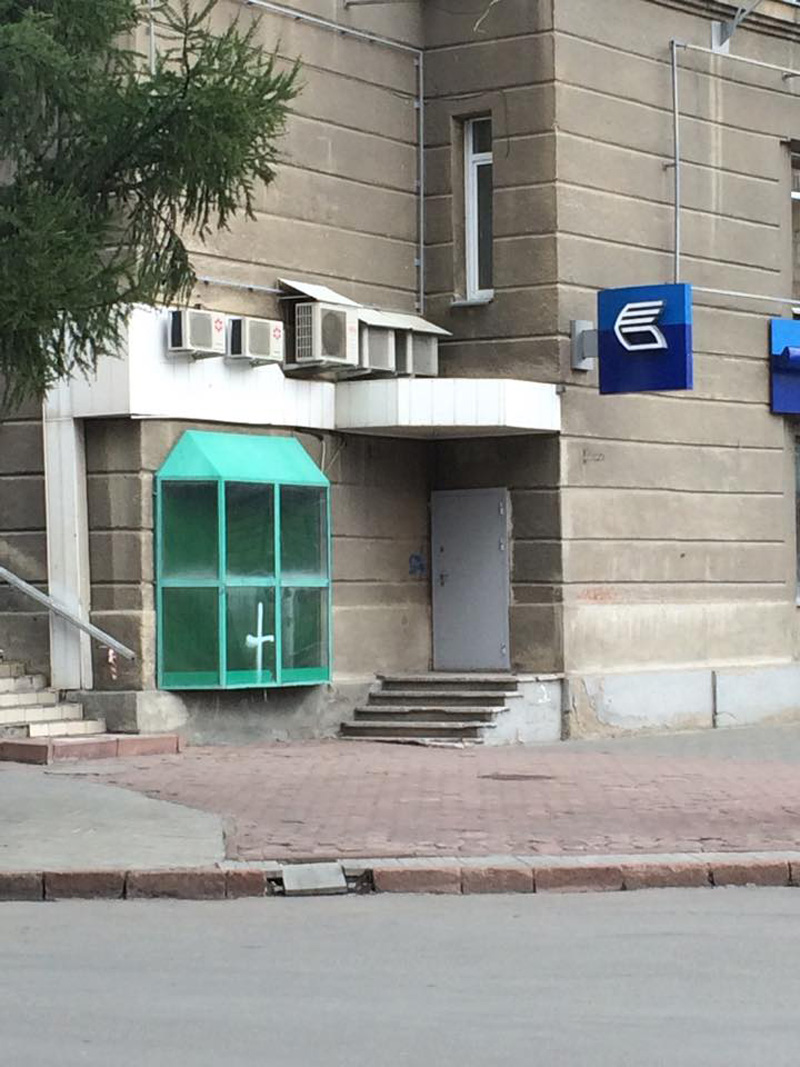
АЛЕКСАНДР ШТАНЮК
ВЫНУЖДЕННЫЕ ВИТРИНЫ
По идее Александра Штанюка, модули для экспонирования «вынужденных» вещей сами должны быть в какой-то мере «вынужденными». Не контрастировать с экспонатами, а быть их подобием и продолжением. Концепция экспонирования заключается в создании нарочито грубых, временных, предельно простых
ALEXANDER SHTANYUK
MAKESHIFT DISPLAY CASES
According to the notions of Alexander Shtanyuk, the modules for the display of “makeshift” things should themselves be “makeshift” to some degree. Not to contrast the exhibits, but to form their likeness and continuation. The exposition concept consists of the creation of deliberately crude, temporary and highly simple display-boxes (with frames of planks or salvaged timber, and transparent film instead of glass), resembling in their aesthetic allotment-style vegetable hotbeds. The texts about the works are to be printed on the film (or glued on it), and lamps are to be placed in the cases for backlighting. A case of corresponding dimensions should be prepared for each object.


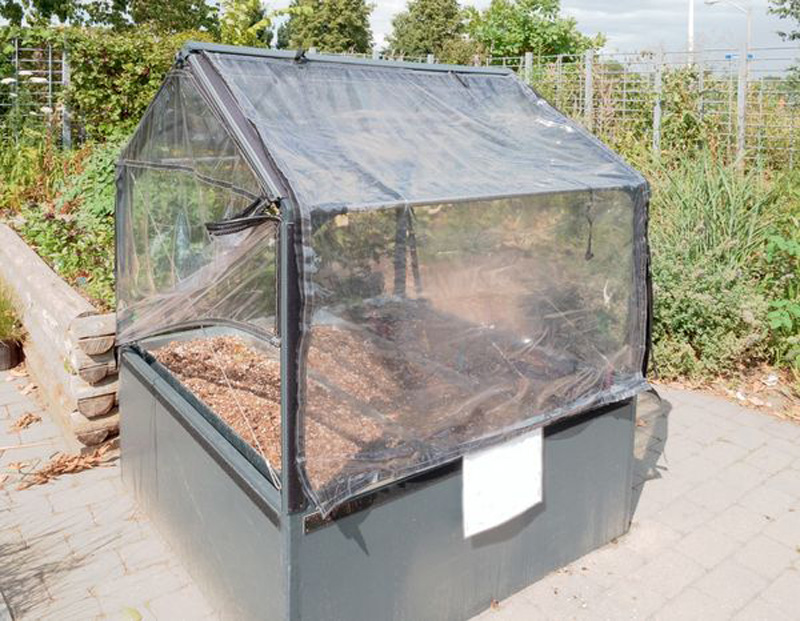
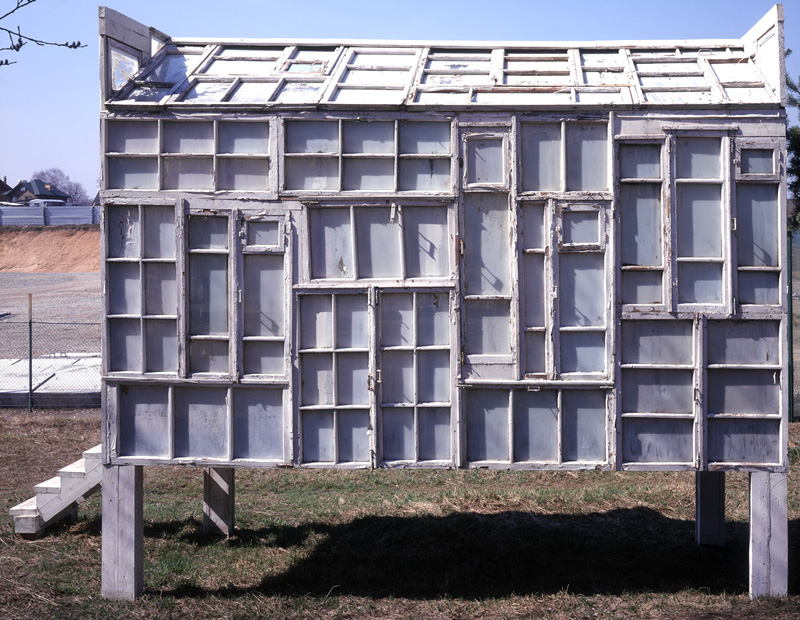
Проект музея «Имя формы» Владимира Архипова представлен на выставке проектов
Фонд
The project of Vladimir Arkhipov’s museum “The Name Of The Form” was first presented at the exhibition of public art projects “Expanding space”, organized by the V-A-C Foundation (September 26 – December 10, 2015, GES-2, Bolotnaya Embankment. 15, Moscow).
V-A-C Foundation is grateful to the website Syg.ma for the assistance in creating this online catalogue of the project.

